9 Types of Castles From History Till Now & Why They Were Built
Author: Rick Worst | Editor: Omar Alonso
Review & Research: Jen Worst & Chris Miller
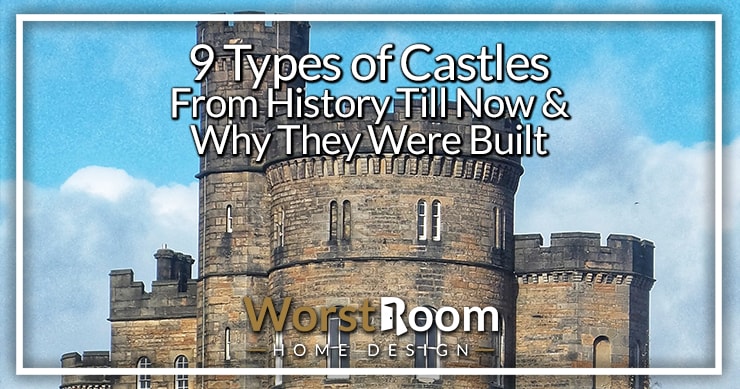
Over the ages, the designs of the types of castles have changed because of the advancements of technology over time and also because of the changes in the purpose and function of castles.
The first castles were just mounds of mud and by the medieval times, castle designs started to evolve. As time went by, technology advanced and the attacking methods became more sophisticated, more elaborate castles emerged that withstood the attacks of enemies.
Castles built in recent times are designed more to embellish fantasy and the romance of the lives of royals and nobles of the bygone times. Below, we'll describe the various castle types in history and a brief overview of how castle styles evolved over the years.
9 Types of Castles
Depending on how granular you want to get, you could argue there are even more different types of castles, but we aren't going to deal with sub-types. The following are the main types of medieval castles across the ages.
Motte & Bailey Castles
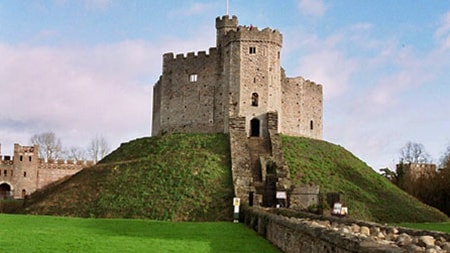
In the early part of the Medieval times, mounds of earth were built for the purpose of defense against enemies.
These were developed into motte and bailey castles by the Normans during the 1000s. Motte and bailey castle types were commonly seen in Great Britain around the 11th and 12th centuries.
The main thing about motte and bailey castle styles was that they were built on a hill. Essentially, the “motte” was a mound of dirt and the flat area or courtyard was called the “bailey.” Usually, the motte was surrounded by a ditch or fence and buildings and facilities for backyard farming could be built on the bailey.
The king of the castle could keep a watch by looking down at the courtyard and a bridge had to be lowered to cross the deep ditches around the castle and enter the bailey.
These simple castle layouts were very easy and quick to build but quite difficult to attack, which was probably the key reason why the Normans were successful in conquering a lot of Europe.
Stone Keep Castles
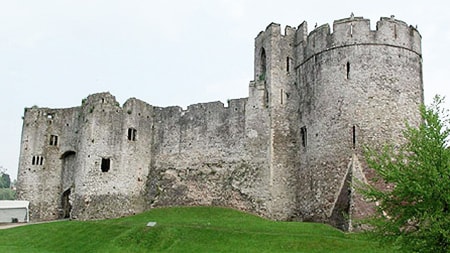
When you speak about medieval castle layout, the typical castle style you would think of is a stone keep castle. These are imposing structures built of stone that were designed to stand the test of time, and several stone keep castles built in the medieval times still exist today.
A stone keep castle layout typically is comprised of 4 towers, which are connected by tall walls made of stone. These robust stone keeps and the castle entrance were made to resist attacks. The walls of the stone keep castles were very high and were made of very thick stone.
Usually, the entrance to the castle was on the 2nd floor, which made it difficult for enemies to enter and various types of ladders or a bridge were used to gain entrance to the castle, which kept them safe during a siege.
A very famous example of a stone keep castle that exists even today is the Tower of London, which is a popular tourist attraction.
Square Stone Keep Castles
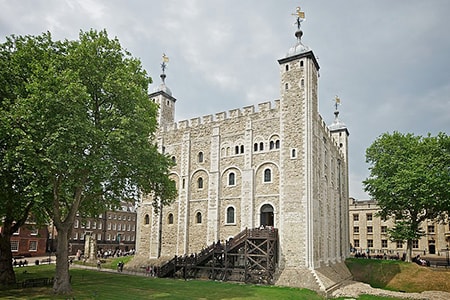
This is the most common type of stone keep seen having square walls and towers that are square or rectangular shaped.
Often, square stone keep castles had an interior medieval castle layout that was quite extravagant because these castles usually housed the rulers and their army.
Square stone keep castles had ample space and could store a lot of food to keep the people fed if the castle was under siege.
Even today, you can find several square stone keep castles in Western Europe. These impressive structures have striking profiles and were built to stand the test of time.
Round Stone Keep Castles
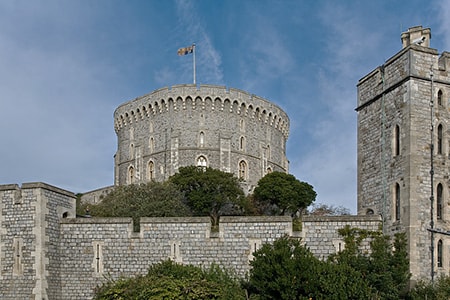
This structure became more preferred compared to stone keeps because enemies figured that the corners of the square stone structures could be damaged, thereby weakening the structural integrity of the castle.
If the corners were damaged sufficiently, then the square stone keep would collapse and kill the people within. This led to the creation of round stone keeps, which eliminated the weakness of square corners.
These types of castles were safer too while retaining all the desirable features of stone keeps and helped many rulers to survive attacks.
Architecture has also been influenced a great deal by round stone keeps and several buildings and towers have been built using the idea of round stone keeps.
Shell Keep Castles
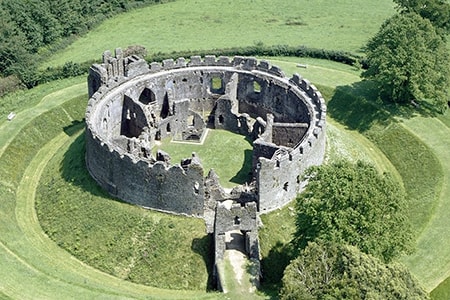
The structure of the shell keep castle layout is essentially an upgrade on the motte and bailey style and is quite similar to the round stone keep structure.
A shell keep is essentially a circular stone wall that surrounds the building on top of the motte. And, when motte and bailey castles were upgraded, the fence was just replaced by round, tall stone walls.
All the essential rooms and living quarters were located within the walls and the entry was via a large gate, which could be opened only from inside the castle, which was another method to keep the castle safe from invaders.
Although shell keep castles are not very stunning to look at, they still hold great interest to history enthusiasts as interesting castle types for non-visual reasons.
Concentric Castles
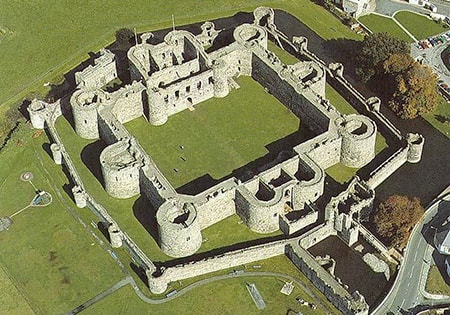
Concentric castles have very interesting architecture and provide several defense layers for the castle. Concentric castles are essentially a combination of the square stone keep and shell keep types of castles.
When entering the castle, you enter the shell keep, which has high stone walls to protect the city. Often, there were moats surrounding the shell keep and the entry was usually through a drawbridge that was lowered.
The shell keep area contained the various facilities and you then would come to the area to take part in personal and professional duties.
Sometimes, there were several stone walls within the shell keep for additional layers of protection, which kept the city and people safe in case of an attack.
Gothic Castles
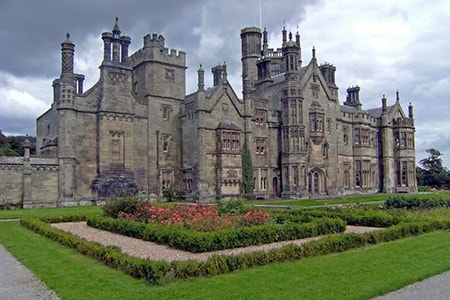
Stone castles had several problems and were quite damp, cold, dark, and altogether not very pleasant places to live in. They didn't have access to all the candle alternatives we have today.
Europe began to witness an architectural revolution during the mid-medieval times and this period saw the evolution of the Gothic style castles, which were more decorative and were characterized by higher rooms and larger windows that let in more light.
These Gothic style castles were much grander and pleasanter to live in. However, during the 1700s, people started to think of Gothic castles as being eerie and haunted, due to their spires and stories of gargoyles coming to life.
Victorian Castles
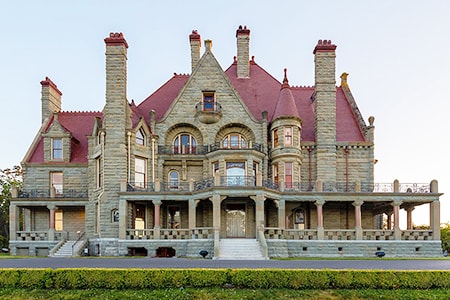
In the Victorian era, several extravagant and lavish types of castles were built and when you think of castles owned by royal families across the world, it is these Victorian-style castles that come to our mind.
Castles became passe and the rich and wealthy began building palaces as residences rather than fortifications. They were still types of mansions, regardless, and their wealth could support keeping up with the others following the trends.
When compared to the old and antiquated castle structures of the past, Victorian castles are the prime example of indulgence and beauty and you are bound to be captivated by their aesthetic appeal and splendor.
The Victorian era was extremely prosperous and was showcased by opulent and lavish Victorian castle styles that sprung up everywhere. Not just limited to the royalty and nobles alone, these castles were built even by wealthy landowners and businessmen.
The luxurious Victorian castles were essentially fancy living spaces with beautiful gardens showcasing the wealth and were not meant for war or defense purposes. They were simply residences of the influential and wealthy people of society.
Victorian castles are characterized by their stunning architecture. You can see examples of fine Victorian style castles all across Europe.
The trend of Victorian castles was illustrated by buildings built by Henry VIII and a fine example of this is Hampton Court near London.
You can also see the influence of the Victorian style in modern architecture and today, several lavish mega-mansions of celebrities and the rich and famous are copies of Victorian castles.
Royal Palaces
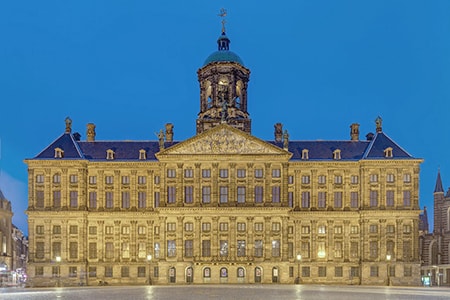
These are quite different from traditional castles; however, people associate one with the other and often, royal palaces are referred to as castles. Royal palaces usually have impressive and opulent living areas.
When weapons using gunpowder came into existence, building castles as defense measures no longer made sense.
Building very large castle structures was not practical any longer because these buildings could be easily destroyed using gunpowder-based weapons like cannons, which could completely annihilate a square or round keep.
So, castles became living quarters for the rich and wealthy instead of being used for defense purposes. Castles or palaces were large, lavish and luxurious structures that were status symbols and showcased your status in the society.
These were built by royals, noblemen or important people in society who wanted a home to match their status. And so, several royal palaces were built during this period. They just become one of the normal types of houses these days (but out of reach for most of us).
Often royal palaces served as residences for nobles; however, at other times they served as government centers that housed government offices and buildings. Whatever was the purpose of the royal palace, it was used by important historical figures.
Types of Castles for Every Rule
Castles are extremely intriguing to all of us and are embedded in our imagination. They are a very important part of architectural history; which people draw inspiration from.
And, maybe because we have grown up listening to fairy tales with kings and castles or built sandcastles on the beach, but the different types of castles hold a special mystique and intrigue in all our lives.



